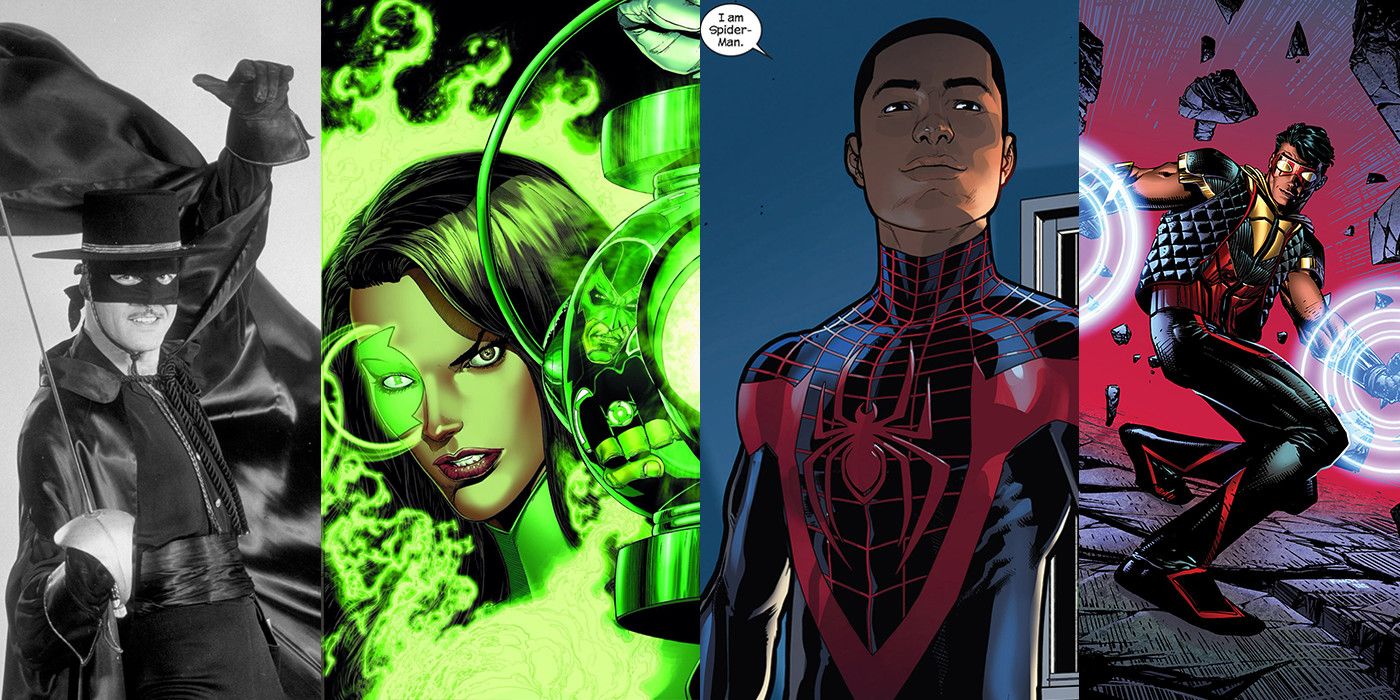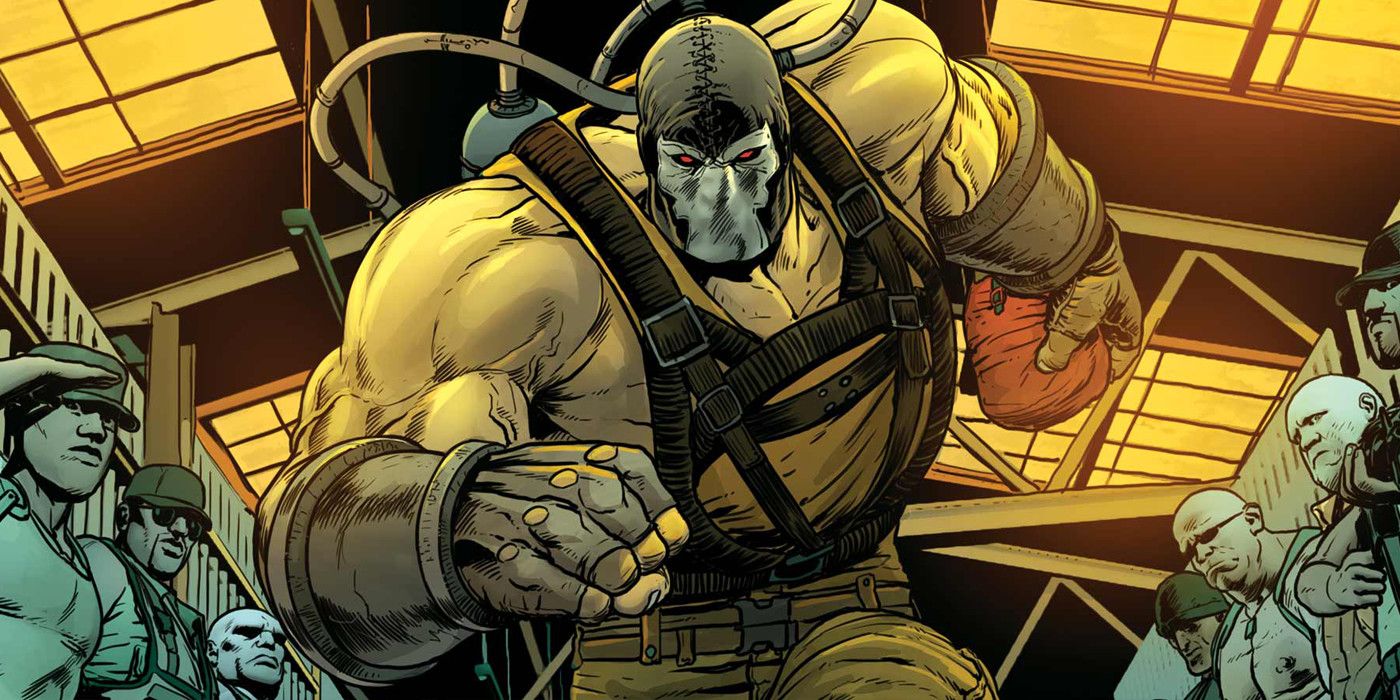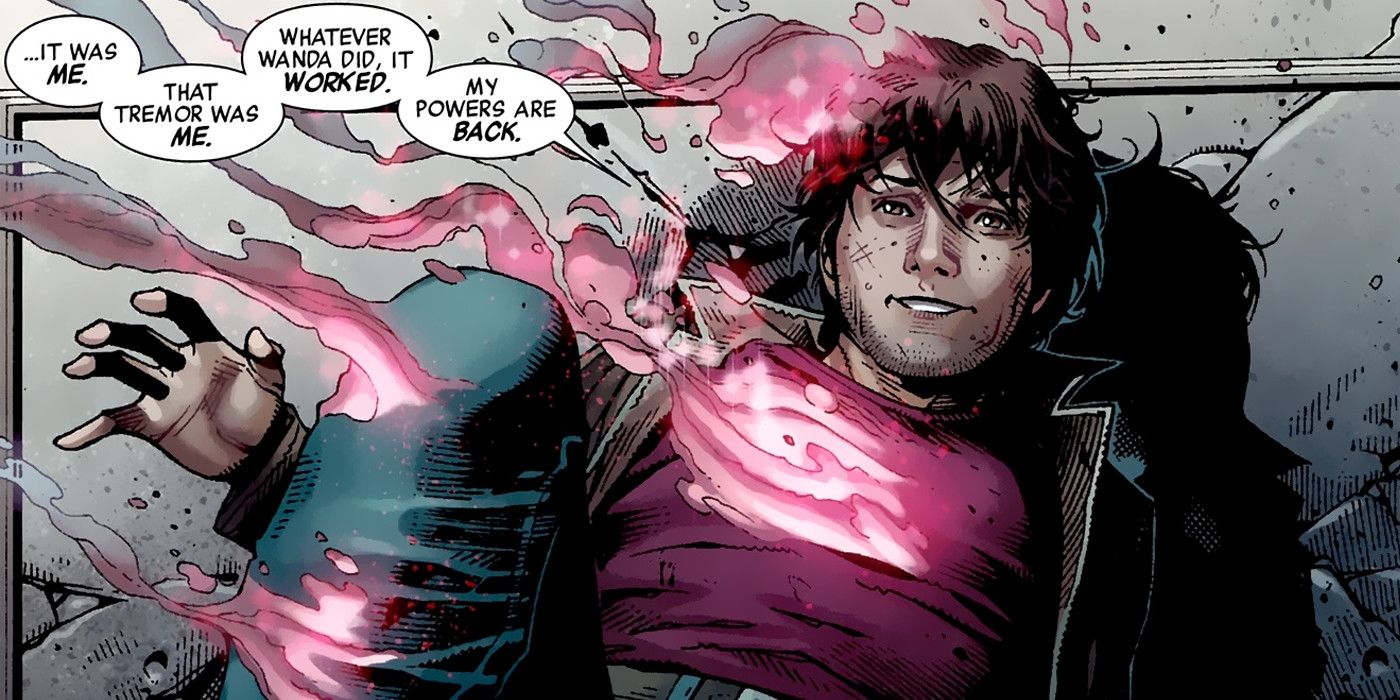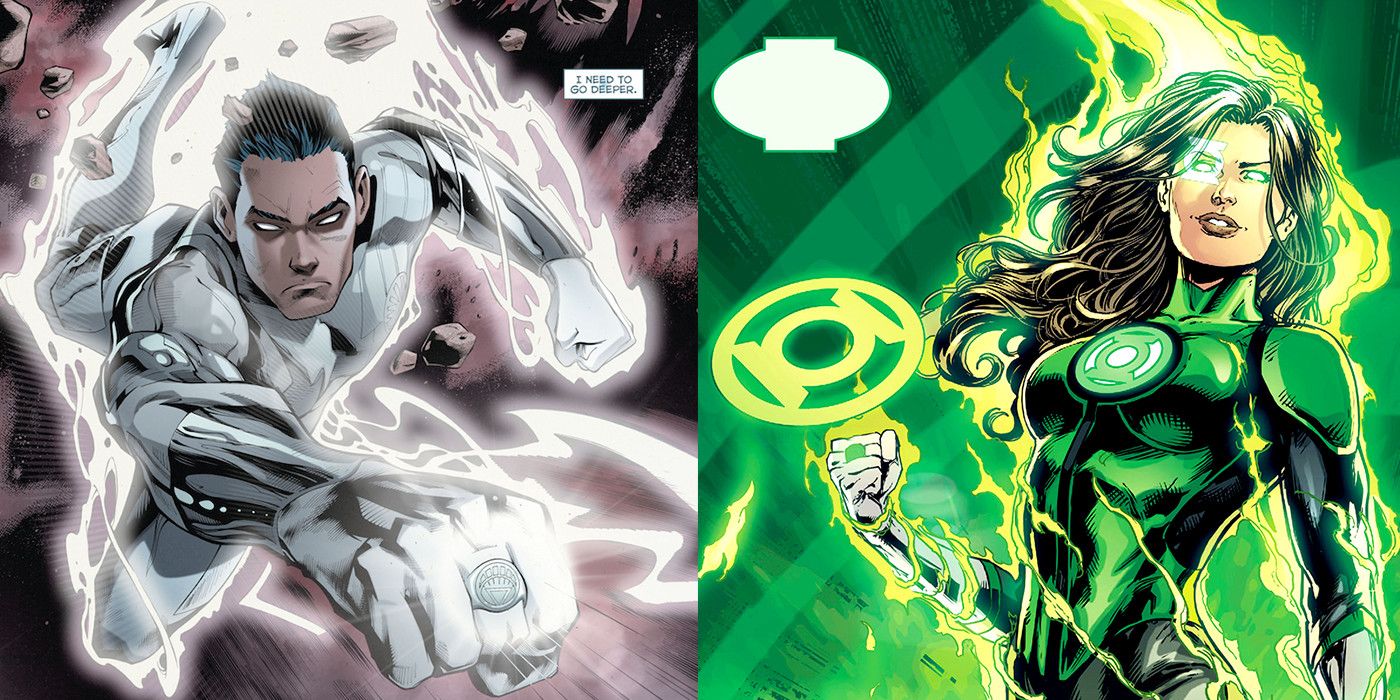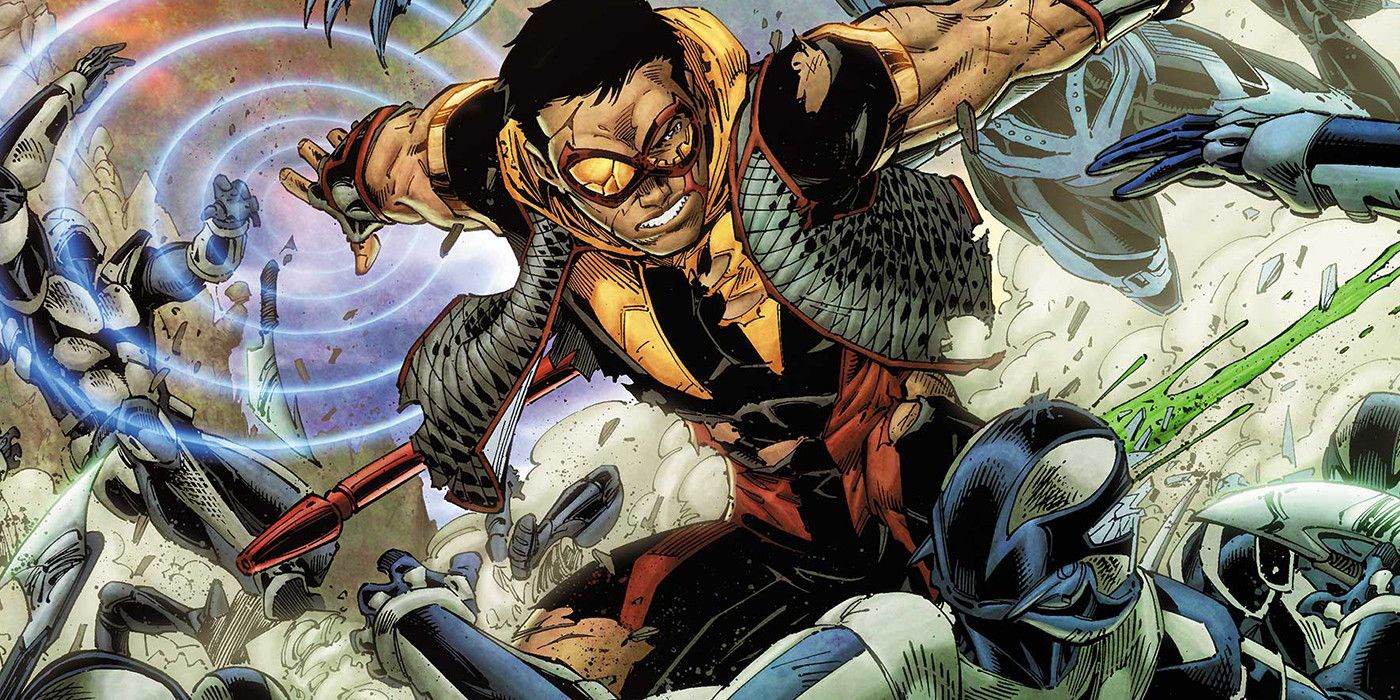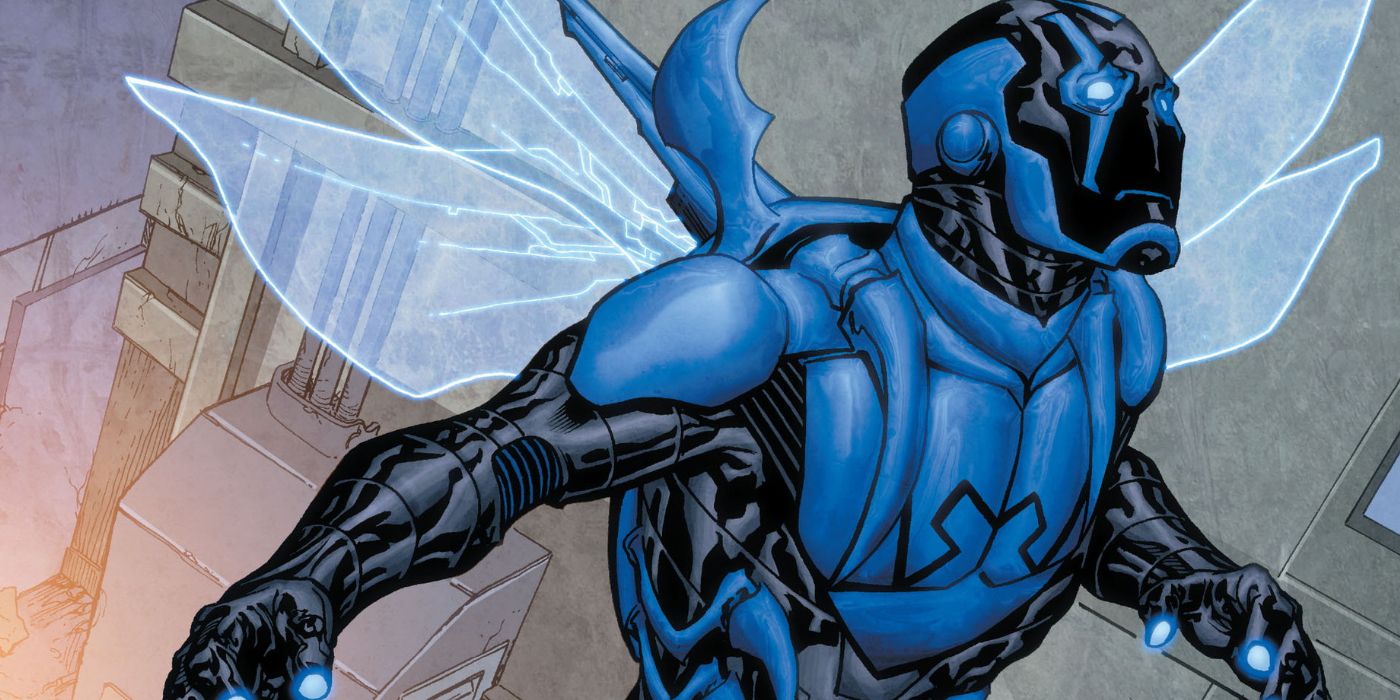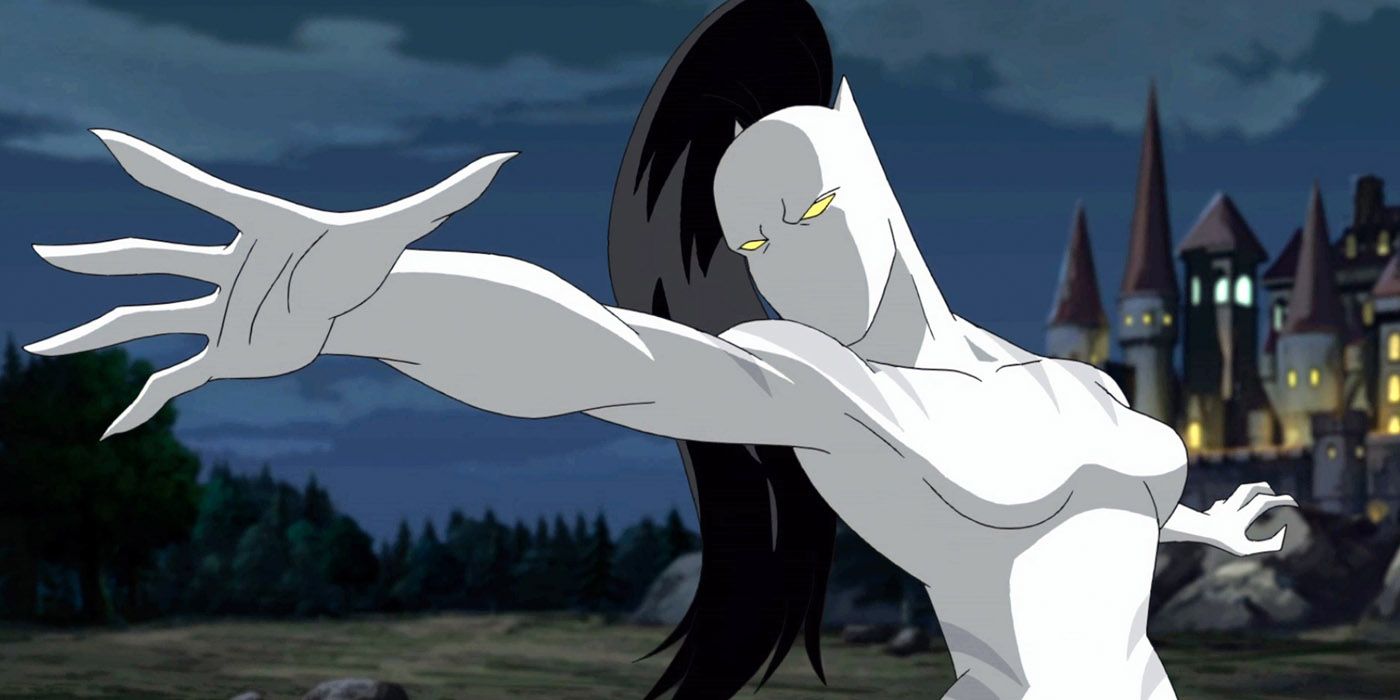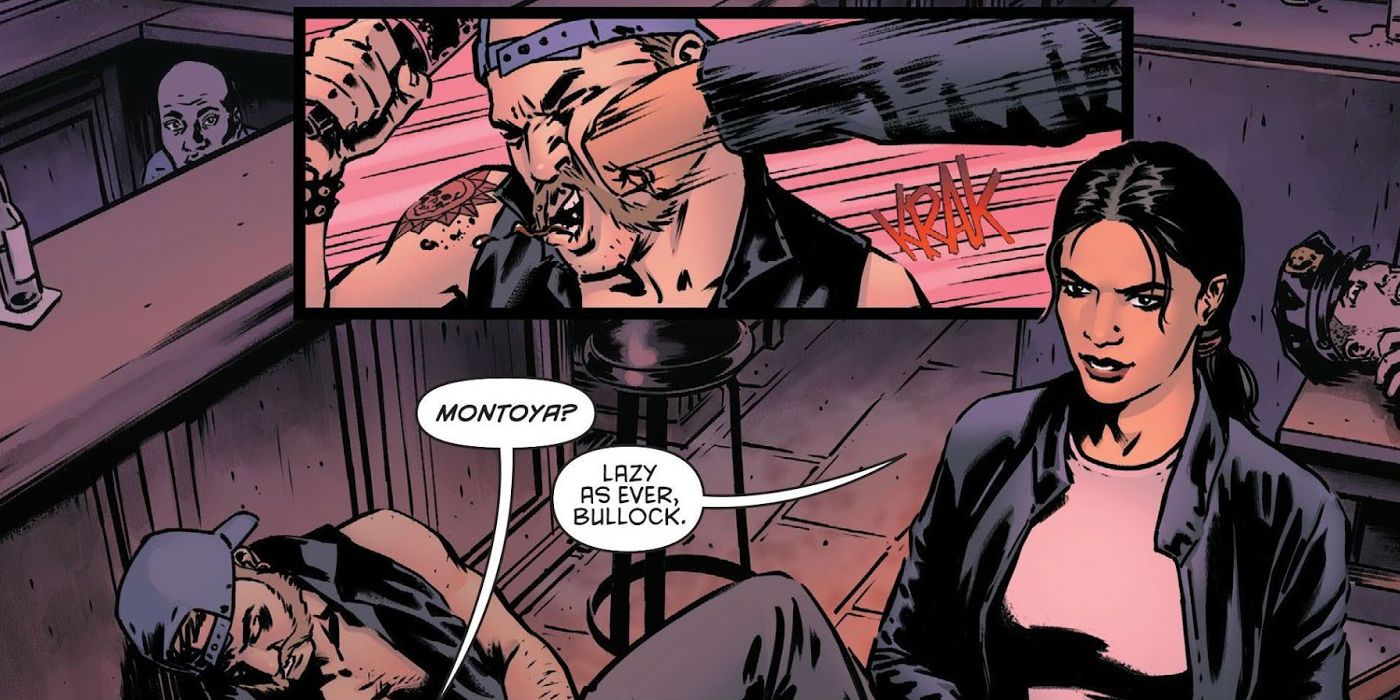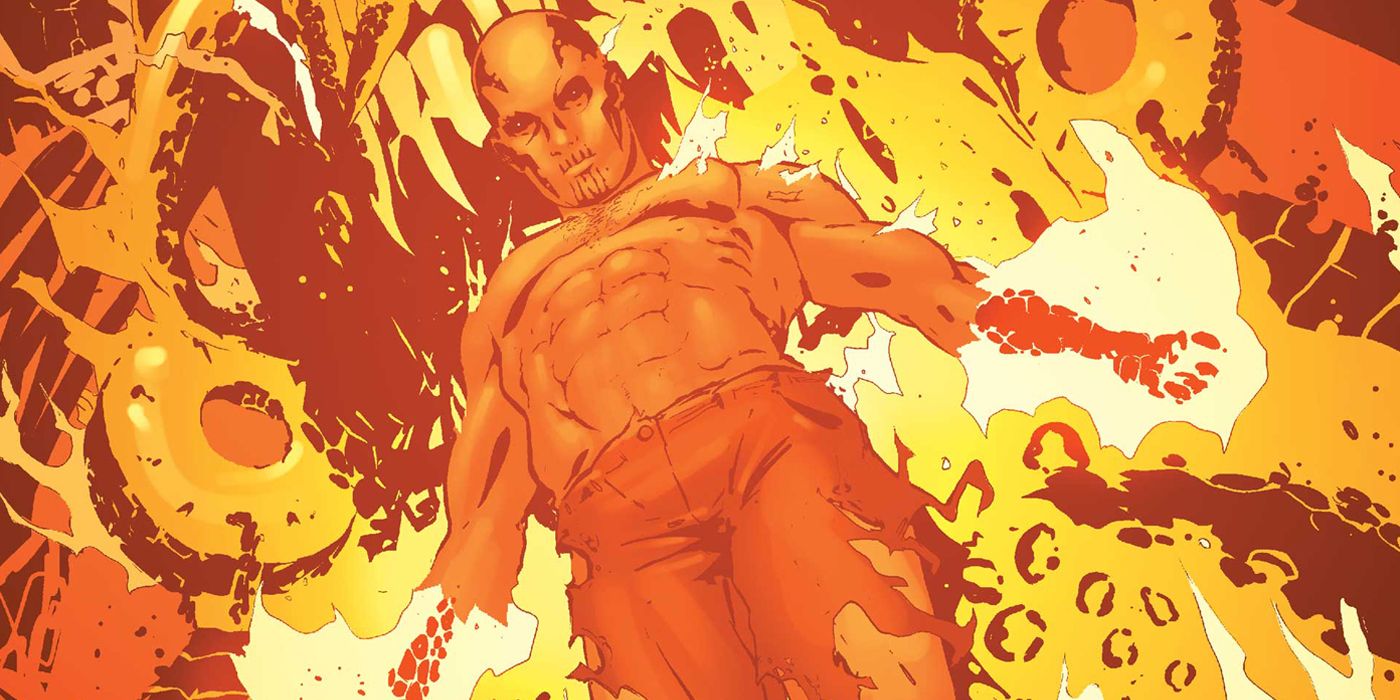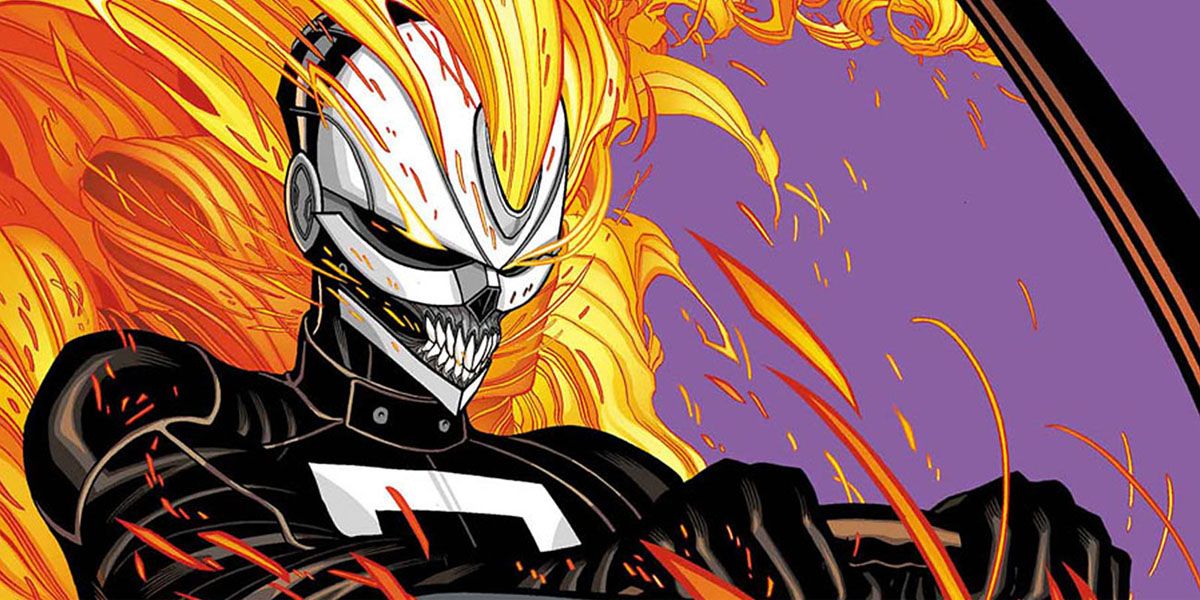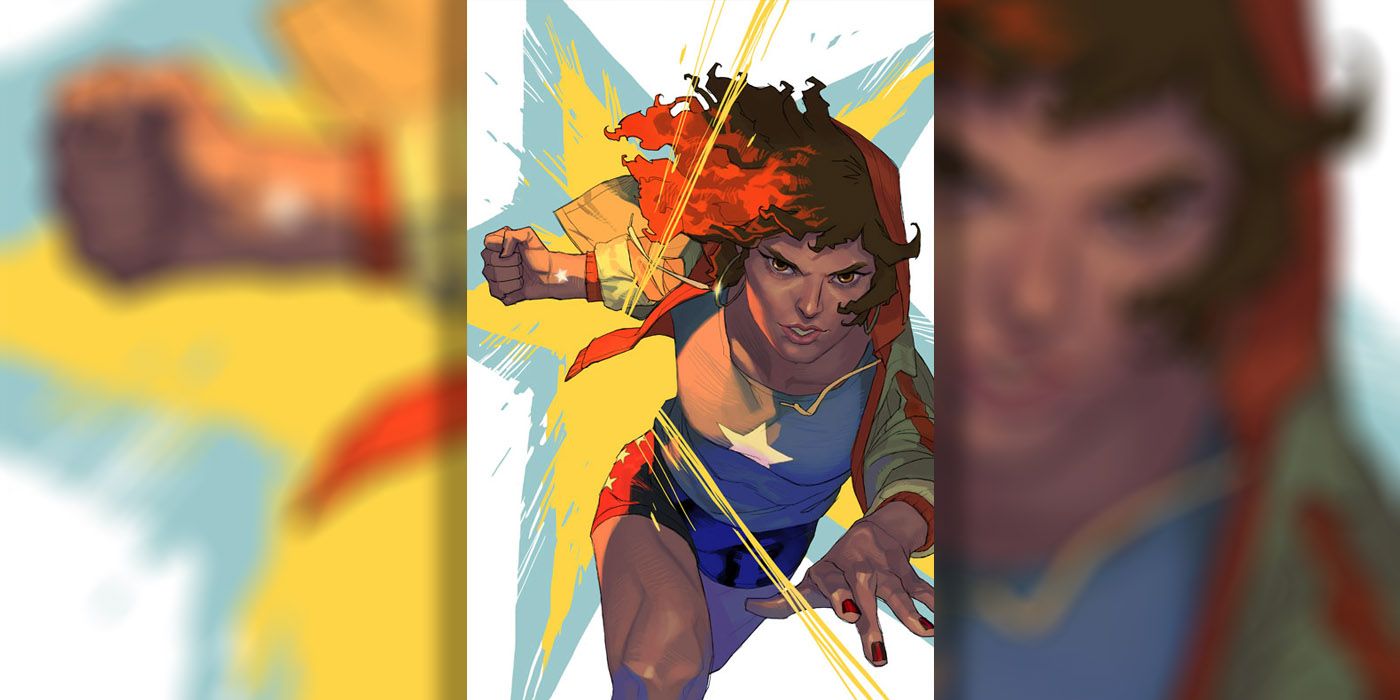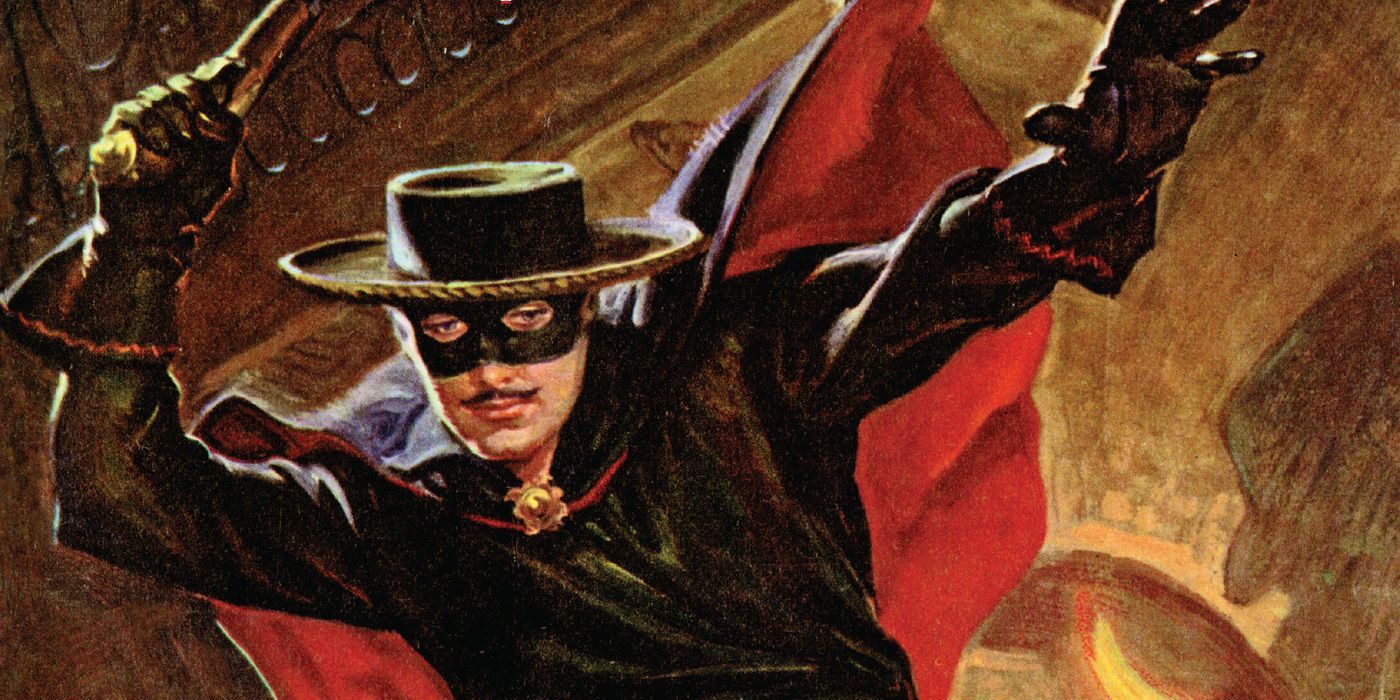In honor of National Hispanic Heritage Month, CBR shines a light on 15 amazing Latino superheroes who have left indelible marks on comic book-based entertainment. The list spans characters from TV, comics, movies and literature, representing the impressive media penetration these figures have achieved. With so many storytelling avenues, their reach has become not just influential, but integral to the fabric of entertainment, especially in comics.
RELATED: 10 Female Marvel Superheroes Who Need Movies Now
The entries below embody diversity and excellence in superhero fiction, but they’re also diverse in character and life experience. They comprise men and women who are detectives, space cops, mutants, martial artists, deadly spirits, business executives and more; but despite their individual life experiences, they share one thing in common: they’re awesome characters and role models, not just for Latino fans, but for everyone. Read on and celebrate with us as we honor incredible characters who make superhero storytelling richer and more inclusive.
RELATED: 11 Movies That Need A Gender-Swapped Reboot
15 Bane
Not all notable pop culture characters need to be good guys. Villains embody a dynamic complexity that’s important to human nature and crucial to great storytelling, which is why Bane, the super-strong, venom-infused criminal who menaces Batman, deserves a spot on this list. Bane’s famous for accomplishing something that many Batman foes haven’t: he actually defeated the Dark Knight and broke the hero’s back. Unlike most Batman supervillains, Bane became iconic for an actual victory and not just for being another bad guy who constantly gets beaten up.
Bane comes from the fictional Latin American country of Santa Prisca, where the corrupt government imprisoned him as a boy for his father’s crimes. He was raised in prison with hardened criminals and endured a tough childhood that taught him intimidation and brute force, but a priest also ensured that he received an education. He grew strong and formidable as he aged, until eventually, the prison masters forced him to become a test subject for Venom, a drug that gave him enhanced strength and durability. Bane escaped prison and crossed paths with Batman multiple times.
With his imposing presence and high intellect, Bane was a worthy adversary for Batman in the comics, and he stands out from many musclebound characters. In the comics, not many masked fitness freaks can quote Shakespeare while they massacre people, but Bane can. If readers ever fantasized about going bad, they’d want to live vicariously through a villain like Bane, who’s a smart, confident supervillain that actually gets things done.
14 Bunker
In 2011, Bunker debuted in “Teen Titans” #1 as a member of the team during the New 52 relaunch. In successive storylines, he emerged as an ebullient, outgoing character who was open, out and proud. Born as Miguel Jose Barragan in a Mexican village, Bunker manifested the ability to generate objects of solid purple energy, similar to the way Green Lanterns use solid green energy. He remained a member of the New 52-era Teen Titans for most of its duration, though he appears to have been sidelined in the team’s current DC Rebirth incarnation.
Although Bunker is a minor character in Teen Titans lore, he’s the team’s most famous openly gay member. That’s not saying much since he’s so obscure, but his creation made news in the comic book media world when he debuted roughly five years ago. Writer Scott Lobdell who, with Brett Booth, created the character, wrote that Bunker didn’t grow up with angst about being gay, simply because his family accepted who he was. As such, his positivity was a great asset of the character, who we hope to see knocking around the DC universe again soon!
13 Rictor
In the Marvel Comics universe, Rictor, AKA Julio Esteban Richter, is a Mexican mutant who releases destructive seismic energy blasts. Writer Louise Simonson and artist Walter Simonson created him in the pages of her 1980s “X-Factor” series, which of course belonged to the “X-Men” family of titles. Back then, the X-Men pretty much dominated comic book sales and were arguably the medium's most popular superhero team. So Rictor definitely benefitted from belonging to a group of characters with a devoted, passionate fan base.
X characters are notorious for angst and drama in older comics, and Rictor was no exception, but it wasn’t until later in his history when he experienced his most personal storylines. In 2005’s “House of M” event, the Scarlet Witch altered reality and eliminated many mutants’ powers, including Rictor’s. Falling depressed and suicidal because he felt helpless, Rictor joined X-Factor Investigations in hopes of rediscovering some semblance of purpose and his place in the world. He quickly proved his worth, battling supervillains even though he was powerless. Luckily, the Scarlet Witch would go on to restore Rictor’s powers in 2011’s “Avengers: Children’s Crusade” miniseries. However, it was during Peter David and Pablo Raimondi's “X-Factor” series that Rictor truly came into his own, at the same time being de-powered but also empowered when he embraced his bisexuality; highlighted in his relationship with fellow hero, Shatterstar.
12 Green Lanterns: Kyle Rayner & Jessica Cruz
The Green Lantern Corps features a cast of characters that includes aliens as well as Earthlings, so it’s a no-brainer that it would be diverse. But no less than two of Earth’s emerald ring bearers have Latin blood: Kyle Rayner and Jessica Cruz.
Even though the Green Lanterns are technically a superteam like the Justice League or Avengers, they’re actually just a spinoff of the adventures of Hal Jordan, who originated in 1959. DC Comics was perfectly happy publishing Jordan’s solo adventures at first, but his mythos became so popular that they developed other space-faring super cops with rings as well. Consequently, the Green Lantern family is another franchise centered on a well-known solo hero that features multiple strong Latino characters.
Kyle Rayner debuted in 1994’s “Green Lantern” #48, some time after which it was revealed that his father was a Mexican-American government agent. Rayner, an artist by trade, became Earth’s main Green Lantern after Jordan went temporarily insane. In a 2013 “Justice League” story, Cruz was a woman traumatized by an alternate dimension version of the so-called "first lantern," Volthoom, who existed as an entity in the character Power Ring's eponymous weapon. Over the miniseries, he exploited her fear to try and make her crumble to his own twisted will. She conquered that particular entity's control with guidance from The Flash, Hal Jordan and the rest of the League before earning a true Green Lantern ring from her own universe.
11 Vibe
Most people today probably know Francisco “Cisco” Ramon -- otherwise known as Vibe in DC Comics -- from his portrayal on the live-action “Flash” TV show. Actor Carlos Valdes portrays Ramon as a genius-level scientist who engineers powerful gadgets and provides comic relief. However, despite Ramon’s humor and nerdy presence, he’s not a joke or minor supporting character. He contributes heavily to storylines and is one of the more memorable cast members. Recently, Ramon’s developed the power to harness the vibrational energy between dimensions, fire energy blasts and see visions of people in other timelines.
Ramon’s status as a jocular scientist in modern superhero pop culture is a drastic departure from his comic book origins. In 1984, writer Gerry Conway and artist Chuck Patton created Vibe as a teenaged Puerto Rican break dancer from Detroit who was born with the ability to fire sonic waves. Vibe joined the Justice League of America, but many readers thought he was an insulting stereotype of Latino culture at the time, and the character was eventually killed off. Writer Geoff Johns brought Vibe back in the New 52 and redefined his powers as more than just sonic waves. Sound ripples became inter-dimensional vibrations that were tied to the multiverse.
Even though Vibe began as caricature of Latino culture, he evolved into something much more. Thanks in large part to the “Flash” show, generations of fans will remember him much more fondly than many comic readers did when he debuted in the 1980s. The jive-talking break dancer who fires projectiles is now a super-intelligent engineer who holds the key to other worlds.
10 Blue Beetle
Mexican-American Jaime Reyes, the current Blue Beetle, is one of the few teenage DC Comics superheroes to have had multiple solo series, and he’s the only teen character of Mexican descent who’s enjoyed the honor. Created by Keith Giffen, John Rogers and Cully Hamner, Reyes owns a mysterious azure beetle scarab that generates a super suit around his body. Depending on the writing team, the scarab is either mystical in origin or the product of alien technology, but wherever it comes from --be it another dimension or outer space -- Reyes uses it to fight evil; oftentimes much to its chagrin.
Reyes is a significant figure in today’s teen hero landscape. DC Comics and its parent company, Warner Bros., seem intent on raising his public profile. Ever since his 2005 debut in the “Infinite Crisis” comic, he’s had appearances in live-action TV shows, animated series and video games. Throughout it all, and no matter where he appears, Jaime maintains a strong personality and a stronger connection to his family, especially as shown in the comics. Soon after he discovered his scarab had powers, he revealed the information to his relatives; unusual behavior among superheroes, many of whom try to hide their identities from loved ones.
9 White Tiger
The current White Tiger is Ava Alaya, the younger sister of Hector Alaya, the original White Tiger, who was one of Marvel’s street level crime fighters in the 1970s and 1980s. Hector was the first Puerto Rican superhero in American comics, and he started a multigenerational legacy where several people, mostly relatives, have adopted the White Tiger name. In most cases, the White Tiger gains enhanced physical powers from mystical amulets, including incredible martial arts talents, strength and athleticism.
In 2011, Ava made her debut in “Avengers Academy” #20. Introduced during a time when superheroes began showing up in more media beyond the printed page, she’s benefitted from more exposure than the previous Tigers. With appearances in the “Ultimate Spider-Man” cartoon and multiple video games, Ava’s pop culture footprint is larger than any of her predecessors. In “Ultimate Spider-Man,” she’s depicted as very focused and determined, similar to her comics portrayal.
In comics, Ava has the potential to be a shining star in the tragic White Tiger legacy. Hector was shot and killed trying to escape from jail after being framed for murder, and evil ninjas called the Hand forced Hector’s niece Angela del Toro, the fourth White Tiger, into becoming an assassin. Now it’s up to Ava to prove her worth. Luckily, armed with an indefatigable work ethic and inner resolve, she is more than up to the task.
8 The Spider Family: Miles Morales, Miguel O’Hara & Anya Corazon
Miles Morales, the Black Latino Spider-Man who debuted in 2011’s “Ultimate Fallout” #4, is now the most famous Latin member of the Spider-Man family, but he's far from the first. Miguel O’Hara, AKA Spider-Man 2099, came to Marvel Comics in 1992 as the first Latino Spider-Man in “Amazing Spider-Man” #365. He was followed by Anya Corazon, AKA Araña, who was introduced in 2004’s “Amazing Fantasy” #1. This motley group of Spider warriors comprises heroes from different timelines with different power sets, but they all have strong fan bases that continue to grow.
Thanks to its history of Latino inclusion, buoyed by the existence of the wildly popular Morales, the Spider family stands as a sterling example of diversity in modern superhero comics. No other comic franchise based solely on a major hero’s legacy features as many prominent Latino members. Peter Parker has always been New York’s “friendly neighborhood Spider-Man,” and successive writers and editors have acknowledged and embraced the city’s diverse Latin presence by creating heroes who honor the culture.
7 Sunspot
Roberto da Costa is a Marvel mutant from Brazil who absorbs solar power and turns into a humanoid bathed in black solar energy. This transformation allows him to fly, fire devastating energy blasts and exhibit increased physical strength. He was one of the original teen members of the original “New Mutants” series in the 1980s, and he’s been embroiled in X-Men-related storylines for most of his history.
Even though Sunspot has experienced more than his share of traumatic events, he’s usually shown as being mentally confident and capable, if also arrogant (and a bit jerky). He became a billionaire businessman as an adult -- thanks in large part to his father’s status as a rich man as well – so his legacy as a character isn’t tied to tragedy like so many other mutants. When comic book readers think of Sunspot, it’s not like when they think of tortured souls like Archangel, Jean Grey or countless other mutant heroes. Today, Sunspot’s one of the few X-Men-affiliated characters who’s transitioned to the Avengers, as the now-leader of Avengers Idea Mechanics (or the new A.I.M.).
6 Fire
Vivacious and free-spirited, Beatriz da Costa, AKA Fire, was a vibrant member of the “Justice League International” after she joined the team in issue #14 in 1988. The Brazilian energy wielder captured readers’ attention with her strong personality and unique, green flame-based powers. Her appearances in the “Justice League Unlimited” and “Batman: Brave and the Bold” cartoons have also introduced her to a broader audience. In early comic book storylines, Fire was depicted as an exciting partier who liked good times and bold fashion choices; her ability to generate emerald infernos, meanwhile, was a huge asset in battle.
But beneath the surface, the risk-taking party girl had much more depth. Before she gained superpowers, da Costa (no relation to Sunspot) was a model, who subsequently became an agent for the Brazilian government. She regularly performed espionage missions, but in one job became trapped in an explosion of pyroplasmic energy that gave her the ability to breathe jets of green flame from her mouth. Later, a strange alien bomb augmented her power, and she started flying and emitting green flames from her body. She became a glamorous superhero, but Fire’s violent past, love for danger and exhibitionist character make her a complex, interesting presence in Justice League history.
5 Renee Montoya
Gotham police officer Renee Montoya is a popular supporting character in Batman stories. She debuted in 1992’s “Batman” #475 and filled a notable role over the years as a non-powered crime fighter in print and on TV in “Batman: The Animated Series.”
In comics, Two-Face outs her as a lesbian to the public and frames her for murder, which causes discord in her personal and professional lives. After nearly killing a corrupt cop, Montoya quits the police force and spirals into alcoholism and depression. She eventually becomes a costumed adventurer named The Question as she rebuilds her life. In DC Comics’ New 52 relaunch, Montoya’s history is rebooted, and she’s a police officer once more.
Montoya experienced an interesting and admirable trajectory in comics. Her popularity catapulted her from supporting character to street fighting superhero, and her presence in media beyond comics has widened her exposure to audiences. She’s also a role model for fans for her inner strength and ability to bounce back from personal trauma.
4 Diablo
SPOILER WARNING: The below entry contains SPOILERS for the "Suicide Squad" film.
Actor Jay Hernandez’s mysterious, pyrokinetic Diablo stood out from other DC Comics criminals in 2016’s “Suicide Squad” film. He was one of the only team members with actual superpowers, and he was also one of the only ones to receive a compelling backstory and character arc. In the past, he was Chato Santana, a gang leader of Mexican descent who accidentally killed his wife and children in a fit of rage when he lost control of his flame abilities. Santana turned himself in to the authorities out of guilt and fear, and was hesitant to use his fire in battle when he joined the Suicide Squad. In the film’s final act, he turns into a fire demon and sacrifices himself to defeat an evil spirit, saving his teammates and the residents of Midway City.
Harley Quinn (Margot Robbie) and Deadshot (Will Smith) may have been more popular, but Diablo was definitely more heroic, and not just because he was one of the few bad guys who expressed remorse over prior horrible behavior. Everyone eventually became good guys by the film’s end, but Diablo benefitted from a character arc that actually showed his progression.
In comics, Santana is the most recent man to use the El Diablo codename. The original user, Lazarus Lane, was a hero in the American Old West who fought crime as a regular human in 1970s comics. Later rewrites revised his origin, and Lane became a man who was cursed to be the host for a demon. This storyline decision started the character’s evolution into the demonic spirit he is today. Santana is the latest in a line of men who’ve been cursed with spiritual powers, which cause them as much harm as good.
3 Ghost Rider (Robbie Reyes)
Thanks to his live-action debut on “Agents of S.H.I.E.L.D.” last month, Mexican-American Robbie Reyes, Marvel’s current Ghost Rider, has received a significant upgrade in pop culture relevance; one he desperately needed. He’s the latest in a long list of characters to use the “Ghost Rider” codename, but the original flaming-skulled spiritual crime fighter, Johnny Blaze, is much more well-known. Reyes has only been in comics since 2014, so he hasn’t had long to capture readers’ hearts.
Yet Reyes offers a new spin on the Ghost Rider concept that sets him apart. Whereas his predecessors rode motorbikes, Reyes drives a muscle car. While the other Riders bonded with spirits of vengeance, Reyes is bonded with the spirit of his uncle, a Satanic serial killer. Reyes hunts down evil people on Earth to satiate his uncle’s thirst for murder, sparing the lives of innocent souls. He struggles with a powerful entity in a different way than the men who came before him.
“Agents of SHIELD” is prime real estate for Reyes to solidify his own legacy as Ghost Rider. There are more people watching TV than there are reading comics, after all, and “S.H.I.E.L.D.” is connected to the incredibly popular Marvel Cinematic Universe. Over the episodes, he’ll have an opportunity to stand out and win over more fans, in addition to the ones who have already come aboard for a spin with his adventures in print.
2 Miss America
Inter-dimensional traveler America Chavez, AKA Miss America, is one of Marvel’s newer teenage superheroes. The powerhouse character, whose abilities include flight, super strength, extreme durability and the power to create portals, debuted in 2011’s “Vengeance” series. She’s been a member of multiple superteams, including the Young Avengers, A-Force and the Ultimates, and belongs to a younger generation of heroes who will potentially be the stars of Marvel stories in the future. She’s tough, confident and worldly, and not just because of her dimension-hopping abilities.
Her unique, surreal origin story also adds to her coolness factor. Raised in another dimension by two superpowered mothers, Chavez gained her powers as a little girl from a magical entity that resided where she lived. When the dimension was threatened by black holes, Chavez’s mothers sacrificed themselves to save it, and Chavez ran away from home to travel across dimensions. This began her journey, both literally and emotionally, from girl to superhero. As Miss America, Chavez has participated in some of Marvel’s most prominent recent events, including the current “Civil War II” storyline.
1 Zorro
Ironically, the most iconic Latino superhero doesn’t belong to Marvel or DC. In fact, he predates both publishers’ existence. In the 1919 serialized novel “The Curse of Capistrano,” Mexican nobleman Don Diego de la Vega adopts the alter ego “Zorro” to defend oppressed citizens against nefarious politicians. Ever since then, the character has appeared constantly in virtually every media platform, including film, television, comic books, prose literature, video games and even stage plays. His signature visual motif, the mask-wearing, rapier-wielding swashbuckler dressed in black, was even the inspiration for Batman, another legendary hero who fights evil in a mask and dark outfit.
Thanks to constant media saturation, Zorro’s not only the most prominent Latino superhero, he’s also one of the most prominent masked adventurers of all time, period. Though he has no powers, Zorro’s acrobatic skill, swordsmanship and undeniable flair for stylized costumes puts him in the superhero category. If Bruce Wayne, Natasha Romanoff and Clint Barton can call themselves superheroes, then Don Diego de la Vega most certainly can, as well. Zorro fought evil in bombastic, larger-than-life style for years before most other superheroes came along, and he is still regarded as one of the greatest of all-time.
Which superheroes are you celebrating Hispanic Heritage Month with this year? Let us know in the comments!

